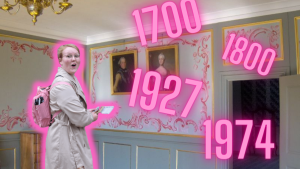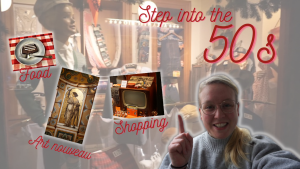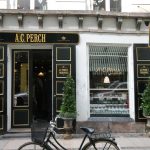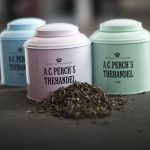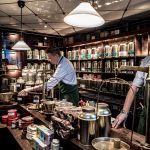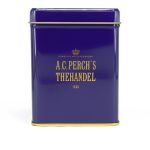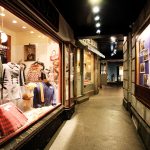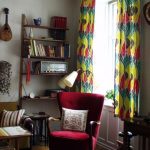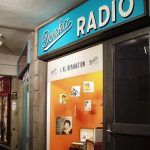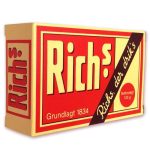Denmark Travel Guide
Gather weary traveller, I have a tale to tell! I’m half Danish and during my brief time on this earth I have seen much of Denmark while visiting family. I’ve seen almost every museum there is in Copenhagen, as this was a long tradition my grandmother and I have kept for years. Thus came the idea to bundle all this experience into a nice guide for you all, so you know where to find Dress History related places & immersive old-time experiences. But don’t worry, I’m not only considering Copenhagen. In a flurry of adventurism I ventured to Jylland. Proudly I present to you: my travel guide.
Décor Vintage shop 1850s-1980s
Things to consider
- This shop works with commission of the original owners of the wares, which generally means that nothing will be dirt cheap! However, this is mediated bij the amazing original pieces this shop carries.
- Due to the uniqueness off the products, the contents of the shops may differ from time to time (when I was there, there unfortunately was nothing Victorian, as the owner depends on people bringing stuff in).
A shop I’ve passed a thousand times but never went in – Décor! Situated very close to the Workers Museum, these two spots are perfect to visit on the same day. I absolutely loved everything they had in there, I felt like a kid in a candy shop. The owner is a lovely lady that sits in the back playing cards. Her shop carries theatre costumes from the Copenhagen Opera company and vintage clothes/shoes/hats/jewelry.
A.C. Perch's Thehandel (Teashop)
Wares: tea, tea tins, gifts and refreshments upstairs
Things to consider
- There’s a probability you’ll have to wait in line to get in. Especially during the summer, but it’s always a busy place. Don’t expect to be inside a long time (unfortunately), so consider it a short but sweet visit (the place is also not very big!).
- It’s pricey! But you can always go as crazy as you want. For about €6-7 euros you can bring yourself something home.
- If you go to the tearoom you might want to reserve a spot, especially during the high season.
In the midst of Copenhagen you can find a little piece of heaven. A refuge for both tea-addicts and Victorian-enthusiasts. According to their brochure: “Apart from electric light and new staff, everything has stayed the same.” Established in 1835, my Danish grandmother corroborates their claim, as her own mother (my great-grandmother) used to get her own signature tea-blend in this establishment. It’s a blend we as a family have yet to get hold of, but our search continues.
In this quaint little shop the interior is dark, wooden and classic. Big golden tins filled with tea leaves decorate the walls. Before you buy any tea, you’ll always get a chance to smell it. This was an odd experience for me the first time buying, as the staff stretched out their tea scoop to me and looked at me intently. It took me an awkward moment to realise their intent, smell the tea and give it my approval. It was a “boring” English Breakfast tea (delicious nonetheless), which smelled like it should, I guess?
I rarely go there for their tea, as it’s quite pricy. Their cheapest tea is 46 DKK/100 grams, which is about €6.18/100 grams at the time of writing. The amount of tea I drink would make that just 100 grams wouldn’t last me very long. So I always tend to come home with their retro tea tins, which come in various colours. The small ones I have bought where 50 DKK. The bigger tin was 75 DKK. It’s a little ritual I have developed over the years: each visit requires a tin. It feels like bringing a piece of Victorian Copenhagen home with me, as I always feel transported into another time when I enter this shop.
Upstairs they have a tearoom, established 2006. Their website describes it as “elegant”, which I’m dying to find out if it is. I have not been yet. I will take the leap for you, dear reader, when this tearoom crosses my path again upon my next visit.
Several other cities in Denmark house and A.C. Perch’s thehandel, namely: Aarhus and the Copenhagen Airport. As the one in Aarhus opened 2013 and the other one in 2017, these are not originally classic establishments. They do seem to try to adhere to their Victorian roots, so if these are closer to you, you can go there to get a taster for their shop in Copenhagen.
Arbejdersmuseet (The Workers museum)
Things to consider
- The 1950s coffeeroom is only accesibble after purchasing a ticket for the museum.
- Try the “kiksekage” served at the 1950s coffeeroom. It’s the first and last place I’ve ever found this pastry in Denmark.
- It’s been a few years (almost a decade) since my last visit, so the details are not that great. I plan on going again soon.
The name doesn’t sound very glamorous, does it? However, don’t let first impressions fool you, dear reader. This museum is one of the few deeply ingrained in my memory. And as some of you know, I have seen many in Copenhagen. Some of my memories have since been blurred during my transition to adulthood, but upon some research I can confidently say that nothing much has changed.
The Workers Museum offers an insight into the life of workers ranging from the Industrial Revolution up into the 1950s. What stood out to me vividly was the recreation of a shopping street, complete with shopfronts and interiors. Sadly (when I went), these stores could not be entered. Through the windows I remember seeing a 30s or 40s clothes shop, packed with clothes and neat price tags. It was like walking back in time.
There is also a 1950s coffeeroom “Kaffebarren”, which is only excessible after purchasing a ticket. The furniture is original and belonged to the building from when it was a community hall. On the red-and-white checkered tabletcloths you can enjoy soda/lemonade (originally packaged), chocolate biscuit cake and their signature “Star” beer. It’s also possible to have coffee with Rich’s, a substitute from back in the day. I only tasted their soda/lemonade, where my grandmother would tell me how one bottle would be shared among multiple people. A concept almost unheard of now where I live.
If you find yourself in Kaffebarren, DO try the “Kiksekage”. It’s made with pasteurized eggs, which cannot be found in the Netherlands (as far as I know). So despite having their recipe, I’ve never been able to recreate it. Get it when you can! All in all a must-see. On their website I found they also have complete house interiors on display, so I’m going to take a gander next time I visit.
1940s Reproduction Town at Bakken
Things to consider
- Admission is free! Except if you want to use the rides you need to buy a “Ride Armband”.
- You need to take the train or some other form of transport, this place is not situated in Copenhagen Centre.
- It’s also an entertainment park, so it might get busy.
In memory of a Danish beloved TV series, Bakken made a reproduction of this small town from the 40’s in the middle of their park. There are multiple shop fronts: a barber, lingerie shop and cardealer. One shop is accessible, the shop with haberdashery, clothes and hats from the time! It looks very authentic and you can even eat in their period-appropiate restaurant. If you want a look inside, go check out my video!
Den Gamle By (Jylland)
Things to consider
- Admission is pricey, although worth it, a point to consider! But they do have student discounts.
- It’s situated in Jylland, so you will have to take the train of pay the Bridge Fee if you come from Copenhagen.
- GOOD SHOES, everything is made of cobble stones.
An absolute masterpiece in my opinion, “The Old Town” takes you back to times of old. This living museum where the staff wears period appropiate clothing is made of old buildings from the whole of Denmark. Broken down and build back up, this museum shows life in Denmark from the 1800s until the 1970s. Visit the Hatter, or a 70’s Hairdresser. It’s all there. Go into period shops where you can buy authentic food from the time or nicely curated souvenirs. You can even take a carriage ride through the heart of town. If you want to see more, go check out my Youtube video!
